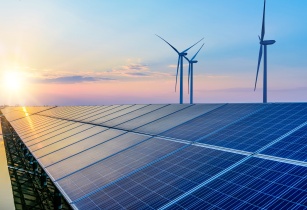The International Energy Agency (IEA) has said that for the rapid progress of clean energy, technology in the solar, heat pumps, and electric vehicles needs to grow
This is important for the world to get closer to net zero by 2050, the IEA added. The yearly update to the IEA's Tracking Clean Energy Progress web platform, published today, indicates tremendous increases in the previous year.
The IEA also released today the newly redesigned Clean Energy Technology Guide, an interactive digital database that allows users to visualise the readiness and geographical distribution of over 500 different innovative technologies or components across the global energy system, as well as the Clean Energy Demonstration Projects Database that goes with it.
“The clean energy economy is rapidly taking shape, but even faster progress is needed in most areas to meet international energy and climate goals,” said IEA executive director, Fatih Birol. “This update of Tracking Clean Energy Progress highlights some very promising developments, underlining both the need and the potential for greater action globally. The extraordinary growth of key technologies like solar and electric cars shows what is possible.”
Solar PV has been upgraded to "on track" since its progress now coincides with net zero milestones. Solar PV generated almost 1,300 terawatt-hours (TWh) in 2022, a 26% increase over 2021 and the highest absolute generation rise of all renewable technologies in 2022. The number of solar PV manufacturing projects in the pipeline increased dramatically as a result of extensive government assistance, particularly in China, the United States, and India.
Significant improvement was also made in the buildings sector, which was moved from "not on track" to "more efforts needed" in the Tracking Clean Energy improvement three-tier ranking system. Governments are enforcing stricter building energy regulations and performance requirements, and the adoption of efficient and renewable building technology such as heat pumps and low-emissions cooling systems is expanding.
Indonesia was the first Southeast Asian country to create a legislative and regulatory framework for carbon capture, utilisation, and storage, while Namibia announced a hydrogen policy in late 2022.
Several technologies have also witnessed significant advancements. The world's largest battery maker announced the start of manufacturing of sodium-ion electric vehicle batteries, an alternative battery chemistry that can help minimise dependency on scarce essential minerals. Earlier this year, two large-scale demonstrations of solid oxide electrolysers, a highly efficient technique for producing low-emission hydrogen, began operation. Positive steps have been made in novel clean technologies for aluminium refining and cement production, both of which have difficult-to-control emissions.
However, stronger governmental support and increased investment across a wide variety of various technologies are required in all parts of the world to allow a larger and quicker shift towards clean energy and maintain net zero emissions within reach by 2050.




